Tomoyoshi Shimobaba
Neural radiance fields-based holography [Invited]
Mar 02, 2024![Figure 1 for Neural radiance fields-based holography [Invited]](/_next/image?url=https%3A%2F%2Ffigures.semanticscholar.org%2F52e54793884240e12519f7239ad5282b05f074bd%2F2-Figure1-1.png&w=640&q=75)
![Figure 2 for Neural radiance fields-based holography [Invited]](/_next/image?url=https%3A%2F%2Ffigures.semanticscholar.org%2F52e54793884240e12519f7239ad5282b05f074bd%2F2-Figure2-1.png&w=640&q=75)
![Figure 3 for Neural radiance fields-based holography [Invited]](/_next/image?url=https%3A%2F%2Ffigures.semanticscholar.org%2F52e54793884240e12519f7239ad5282b05f074bd%2F3-Figure3-1.png&w=640&q=75)
![Figure 4 for Neural radiance fields-based holography [Invited]](/_next/image?url=https%3A%2F%2Ffigures.semanticscholar.org%2F52e54793884240e12519f7239ad5282b05f074bd%2F3-Figure4-1.png&w=640&q=75)
Abstract:This study presents a novel approach for generating holograms based on the neural radiance fields (NeRF) technique. Generating three-dimensional (3D) data is difficult in hologram computation. NeRF is a state-of-the-art technique for 3D light-field reconstruction from 2D images based on volume rendering. The NeRF can rapidly predict new-view images that do not include a training dataset. In this study, we constructed a rendering pipeline directly from a 3D light field generated from 2D images by NeRF for hologram generation using deep neural networks within a reasonable time. The pipeline comprises three main components: the NeRF, a depth predictor, and a hologram generator, all constructed using deep neural networks. The pipeline does not include any physical calculations. The predicted holograms of a 3D scene viewed from any direction were computed using the proposed pipeline. The simulation and experimental results are presented.
Controllable energy angular spectrum method
Mar 18, 2022
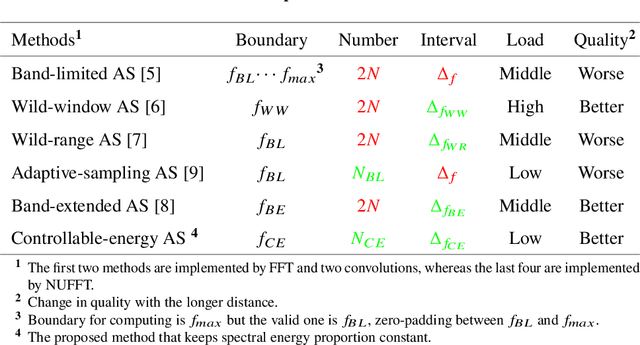
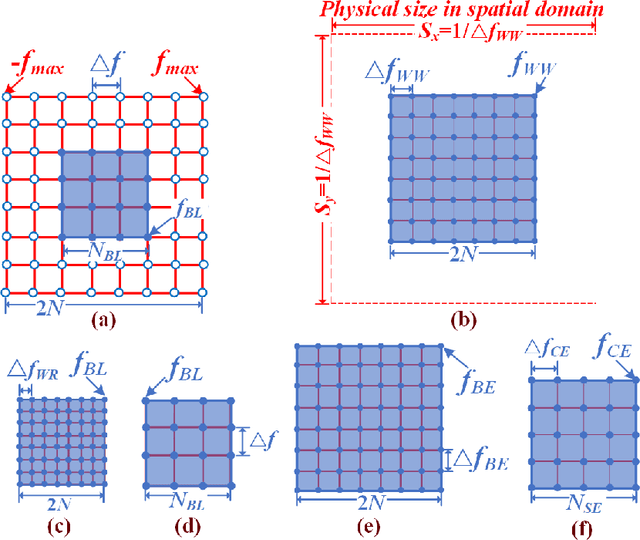
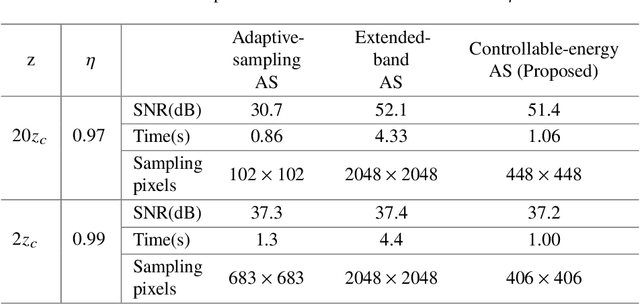
Abstract:A controllable energy method, which considers the undersampling issue of the transfer function and valid spectral energy of a source signal, is proposed to implement angular spectrum diffraction calculation in near and far fields. The proposed method provides an optimized frequency boundary $f_{CE}$ within which it always keeps controllable energy to be diffracted. The controllable energy angular spectrum method significantly reduces the number of samples while having the same accuracy as previous angular spectrum methods, implying a higher calculation efficiency. The new perspective of analyzing spectral energy is shown to improve the performance of relevant diffraction calculations.
Image quality enhancement of embedded holograms in holographic information hiding using deep neural networks
Dec 20, 2021

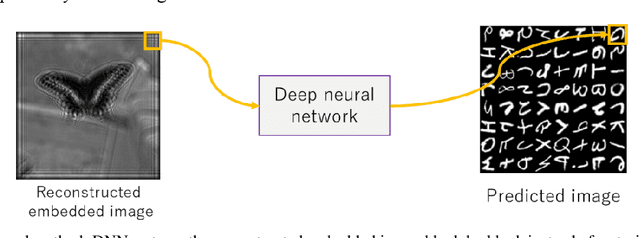
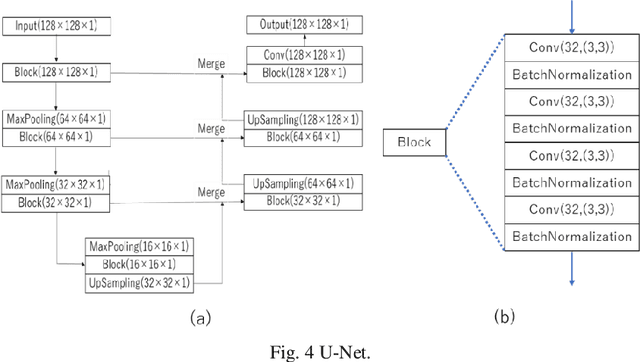
Abstract:Holographic information hiding is a technique for embedding holograms or images into another hologram, used for copyright protection and steganography of holograms. Using deep neural networks, we offer a way to improve the visual quality of embedded holograms. The brightness of an embedded hologram is set to a fraction of that of the host hologram, resulting in a barely damaged reconstructed image of the host hologram. However, it is difficult to perceive because the embedded hologram's reconstructed image is darker than the reconstructed host image. In this study, we use deep neural networks to restore the darkened image.
Optimization of phase-only holograms calculated with scaled diffraction calculation through deep neural networks
Dec 02, 2021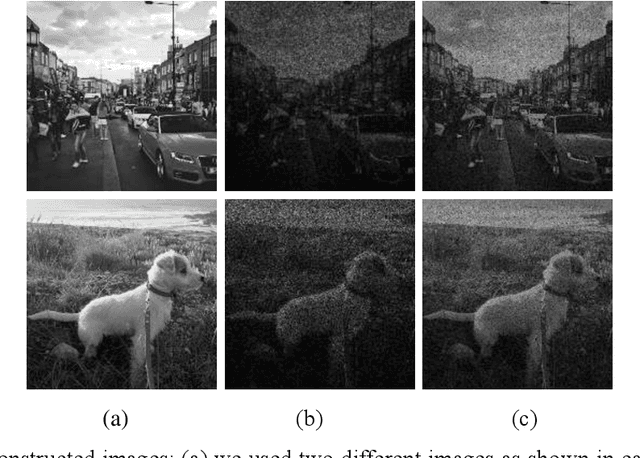

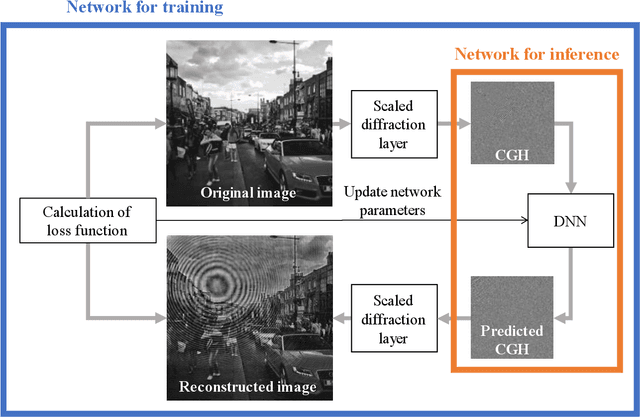
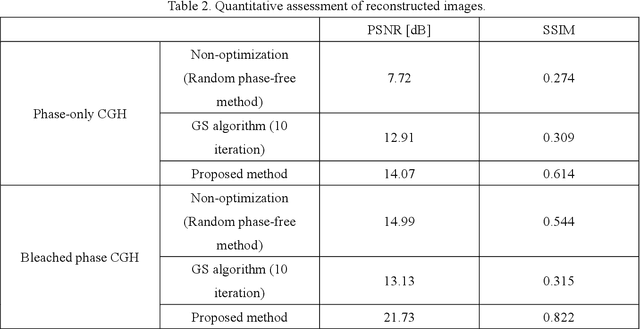
Abstract:Computer-generated holograms (CGHs) are used in holographic three-dimensional (3D) displays and holographic projections. The quality of the reconstructed images using phase-only CGHs is degraded because the amplitude of the reconstructed image is difficult to control. Iterative optimization methods such as the Gerchberg-Saxton (GS) algorithm are one option for improving image quality. They optimize CGHs in an iterative fashion to obtain a higher image quality. However, such iterative computation is time consuming, and the improvement in image quality is often stagnant. Recently, deep learning-based hologram computation has been proposed. Deep neural networks directly infer CGHs from input image data. However, it is limited to reconstructing images that are the same size as the hologram. In this study, we use deep learning to optimize phase-only CGHs generated using scaled diffraction computations and the random phase-free method. By combining the random phase-free method with the scaled diffraction computation, it is possible to handle a zoomable reconstructed image larger than the hologram. In comparison to the GS algorithm, the proposed method optimizes both high quality and speed.
Digital holographic particle volume reconstruction using a deep neural network
Oct 21, 2018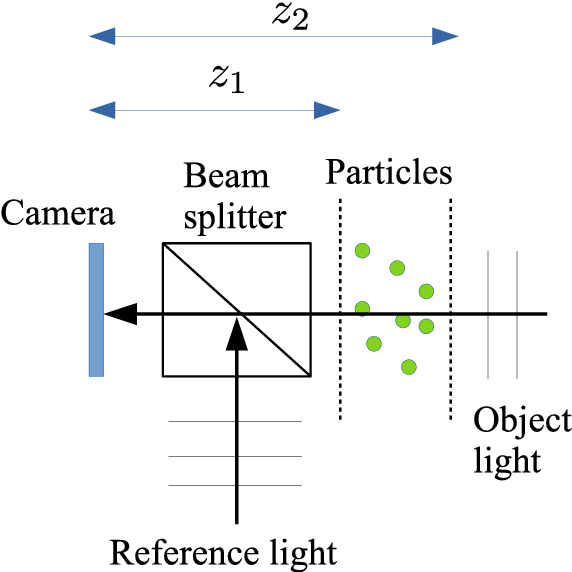
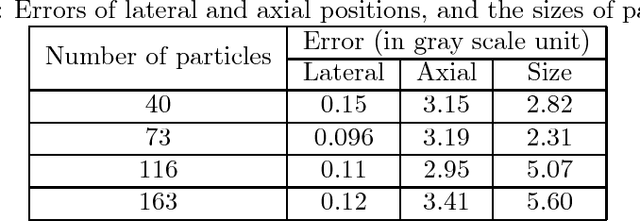
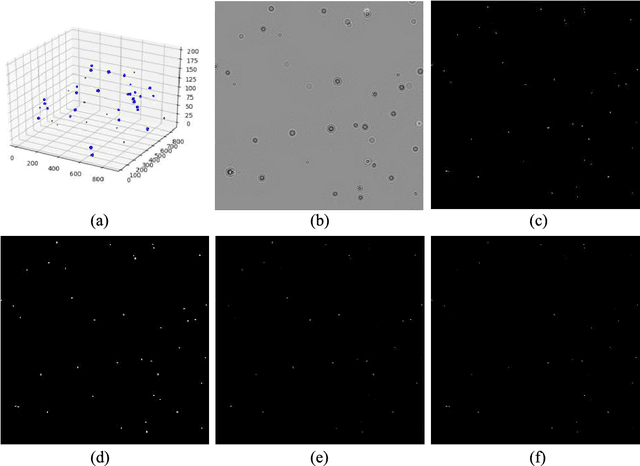
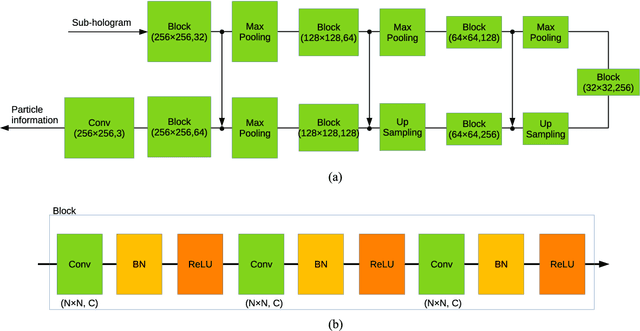
Abstract:This paper proposes a particle volume reconstruction directly from an in-line hologram using a deep neural network. Digital holographic volume reconstruction conventionally uses multiple diffraction calculations to obtain sectional reconstructed images from an in-line hologram, followed by detection of the lateral and axial positions, and the sizes of particles by using focus metrics. However, the axial resolution is limited by the numerical aperture of the optical system, and the processes are time-consuming. The method proposed here can simultaneously detect the lateral and axial positions, and the particle sizes via a deep neural network (DNN). We numerically investigated the performance of the DNN in terms of the errors in the detected positions and sizes. The calculation time is faster than conventional diffracted-based approaches.
Computational ghost imaging using a field-programmable gate array
Oct 10, 2018

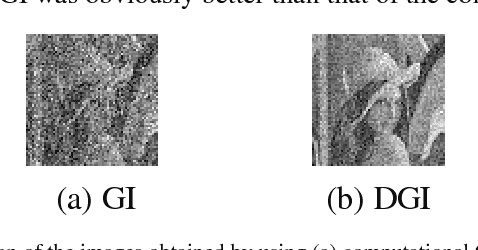
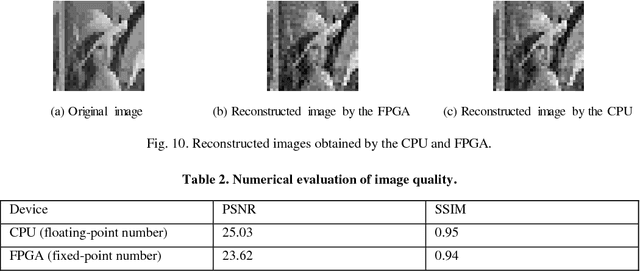
Abstract:Computational ghost imaging is a promising technique for single-pixel imaging because it is robust to disturbance and can be operated over broad wavelength bands, unlike common cameras. However, one disadvantage of this method is that it has a long calculation time for image reconstruction. In this paper, we have designed a dedicated calculation circuit that accelerated the process of computational ghost imaging. We implemented this circuit by using a field-programmable gate array, which reduced the calculation time for the circuit compared to a CPU. The dedicated circuit reconstructs images at a frame rate of 300 Hz.
Convolutional neural network-based regression for depth prediction in digital holography
Feb 02, 2018

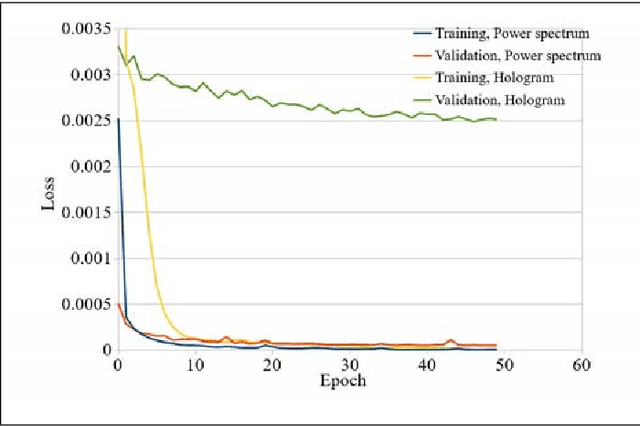
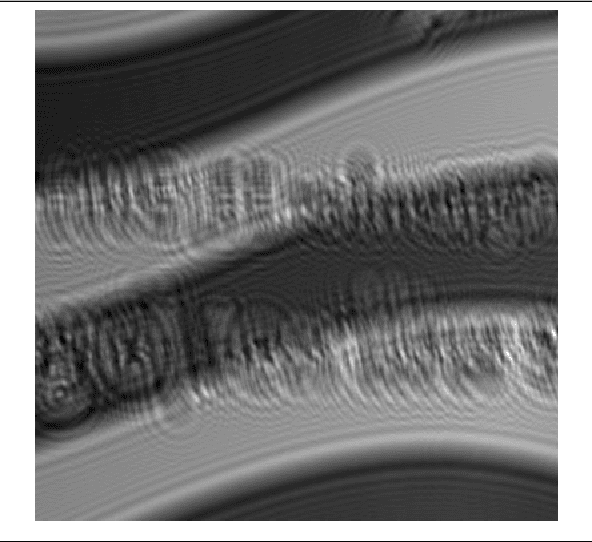
Abstract:Digital holography enables us to reconstruct objects in three-dimensional space from holograms captured by an imaging device. For the reconstruction, we need to know the depth position of the recoded object in advance. In this study, we propose depth prediction using convolutional neural network (CNN)-based regression. In the previous researches, the depth of an object was estimated through reconstructed images at different depth positions from a hologram using a certain metric that indicates the most focused depth position; however, such a depth search is time-consuming. The CNN of the proposed method can directly predict the depth position with millimeter precision from holograms.
Computational ghost imaging using deep learning
Oct 19, 2017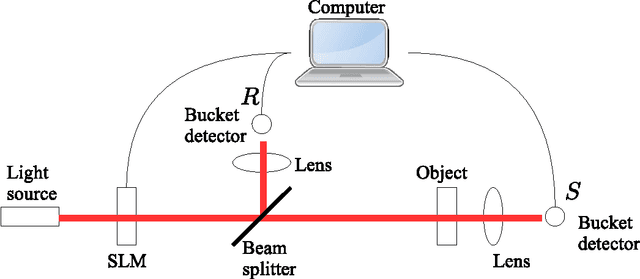


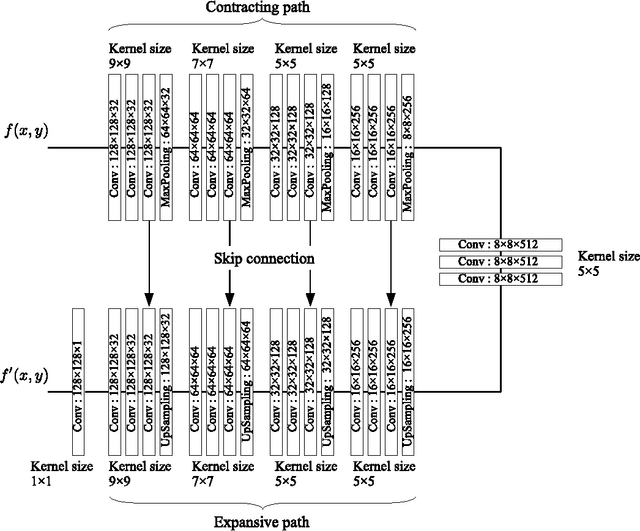
Abstract:Computational ghost imaging (CGI) is a single-pixel imaging technique that exploits the correlation between known random patterns and the measured intensity of light transmitted (or reflected) by an object. Although CGI can obtain two- or three- dimensional images with a single or a few bucket detectors, the quality of the reconstructed images is reduced by noise due to the reconstruction of images from random patterns. In this study, we improve the quality of CGI images using deep learning. A deep neural network is used to automatically learn the features of noise-contaminated CGI images. After training, the network is able to predict low-noise images from new noise-contaminated CGI images.
Deep-learning-based data page classification for holographic memory
Jul 02, 2017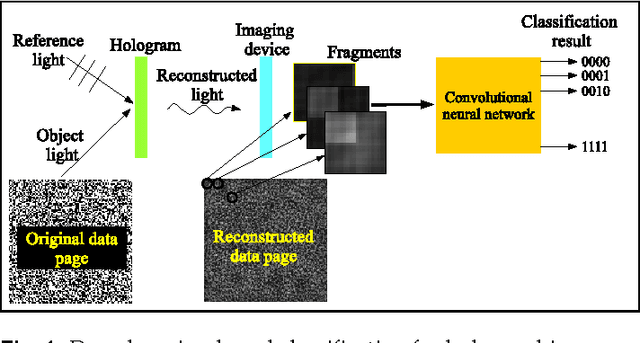
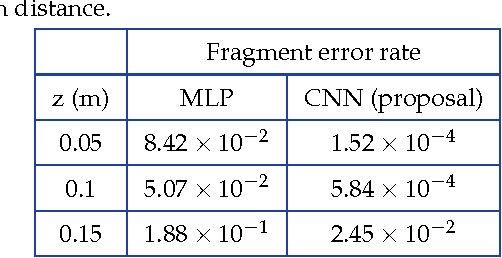
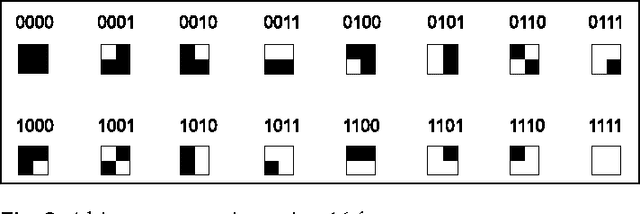
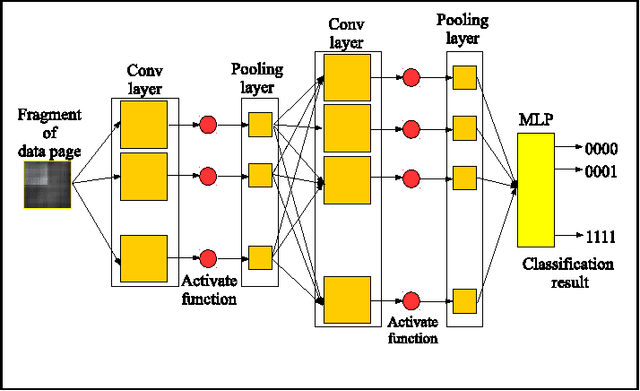
Abstract:We propose a deep-learning-based classification of data pages used in holographic memory. We numerically investigated the classification performance of a conventional multi-layer perceptron (MLP) and a deep neural network, under the condition that reconstructed page data are contaminated by some noise and are randomly laterally shifted. The MLP was found to have a classification accuracy of 91.58%, whereas the deep neural network was able to classify data pages at an accuracy of 99.98%. The accuracy of the deep neural network is two orders of magnitude better than the MLP.
Autoencoder-based holographic image restoration
Dec 12, 2016

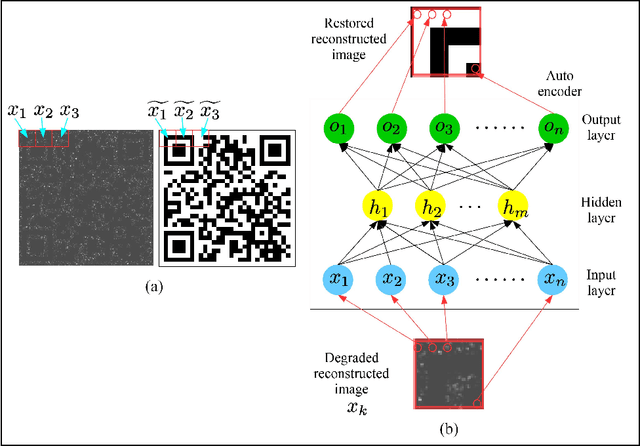
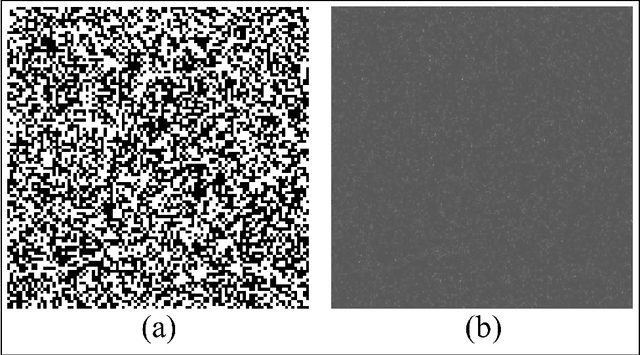
Abstract:We propose a holographic image restoration method using an autoencoder, which is an artificial neural network. Because holographic reconstructed images are often contaminated by direct light, conjugate light, and speckle noise, the discrimination of reconstructed images may be difficult. In this paper, we demonstrate the restoration of reconstructed images from holograms that record page data in holographic memory and QR codes by using the proposed method.
 Add to Chrome
Add to Chrome Add to Firefox
Add to Firefox Add to Edge
Add to Edge